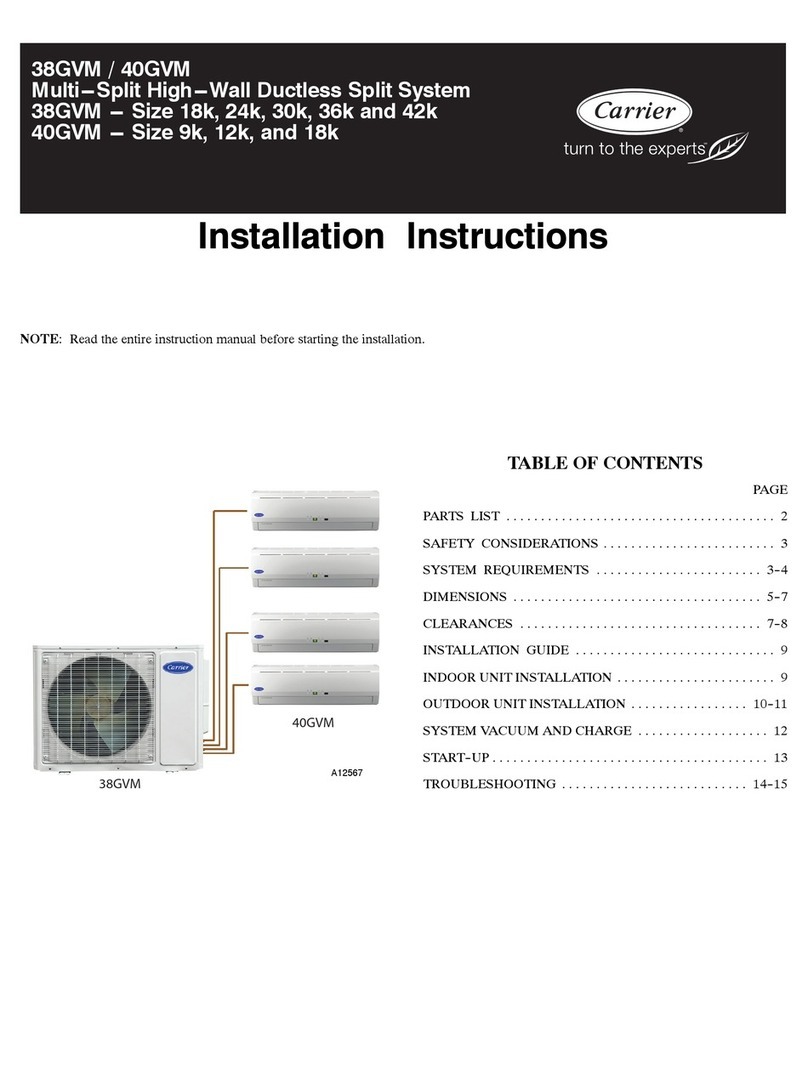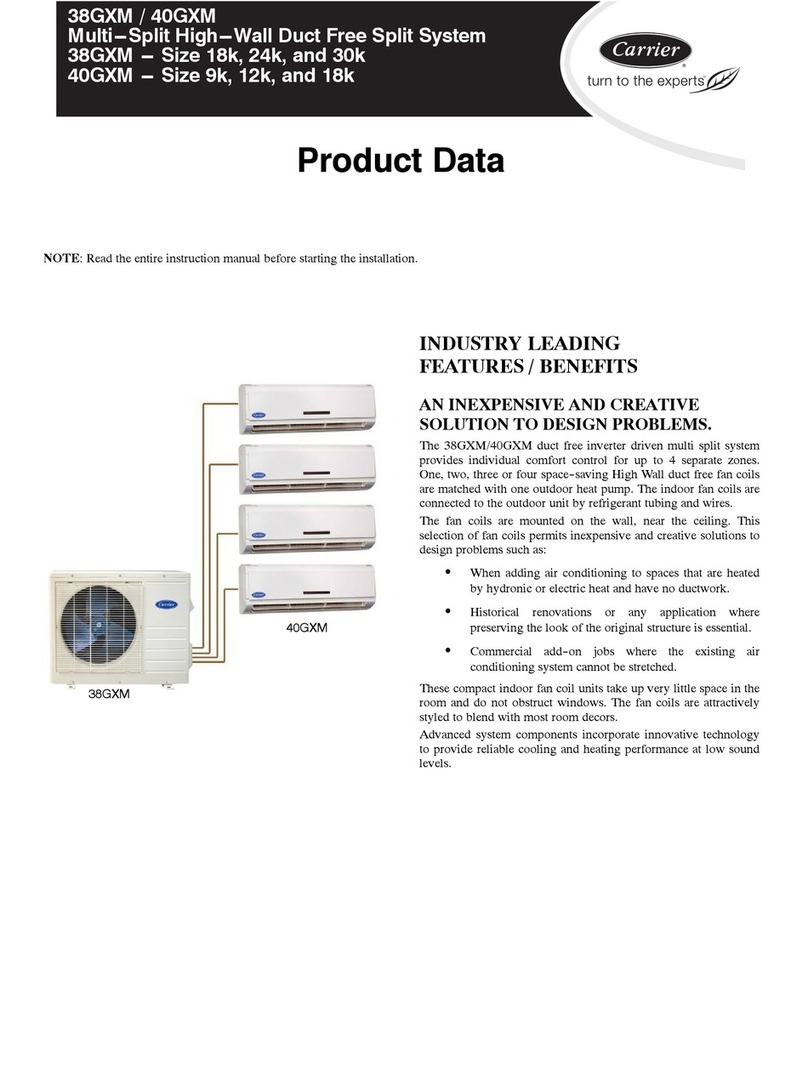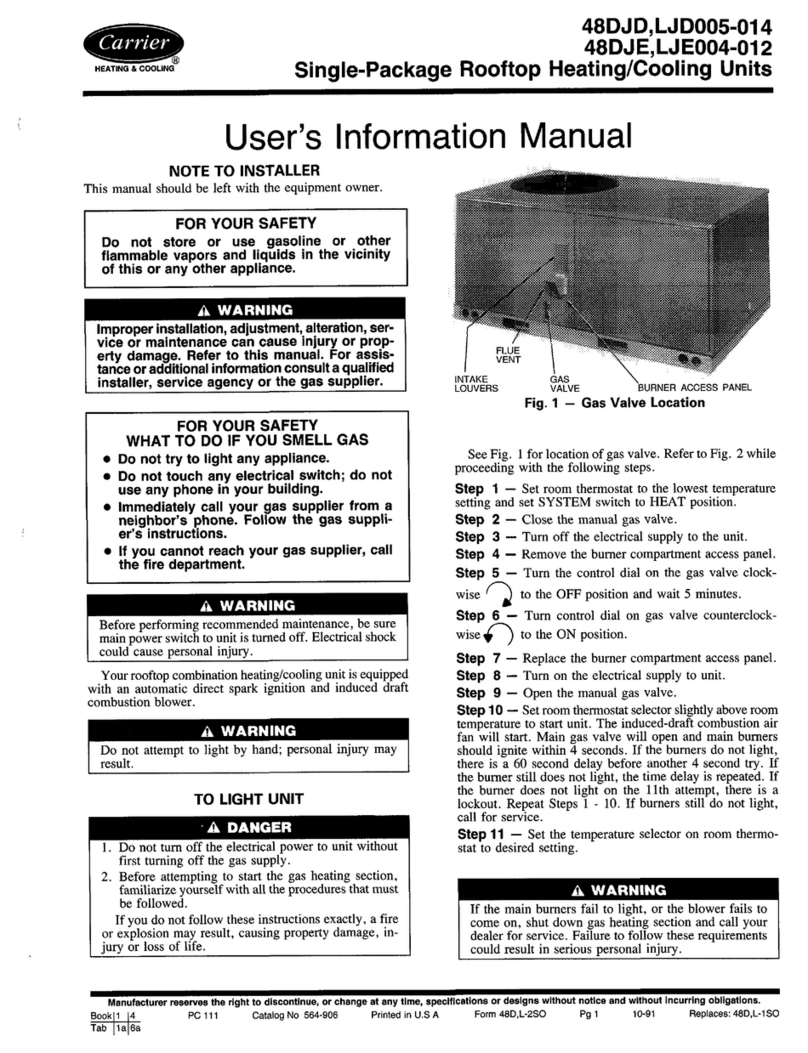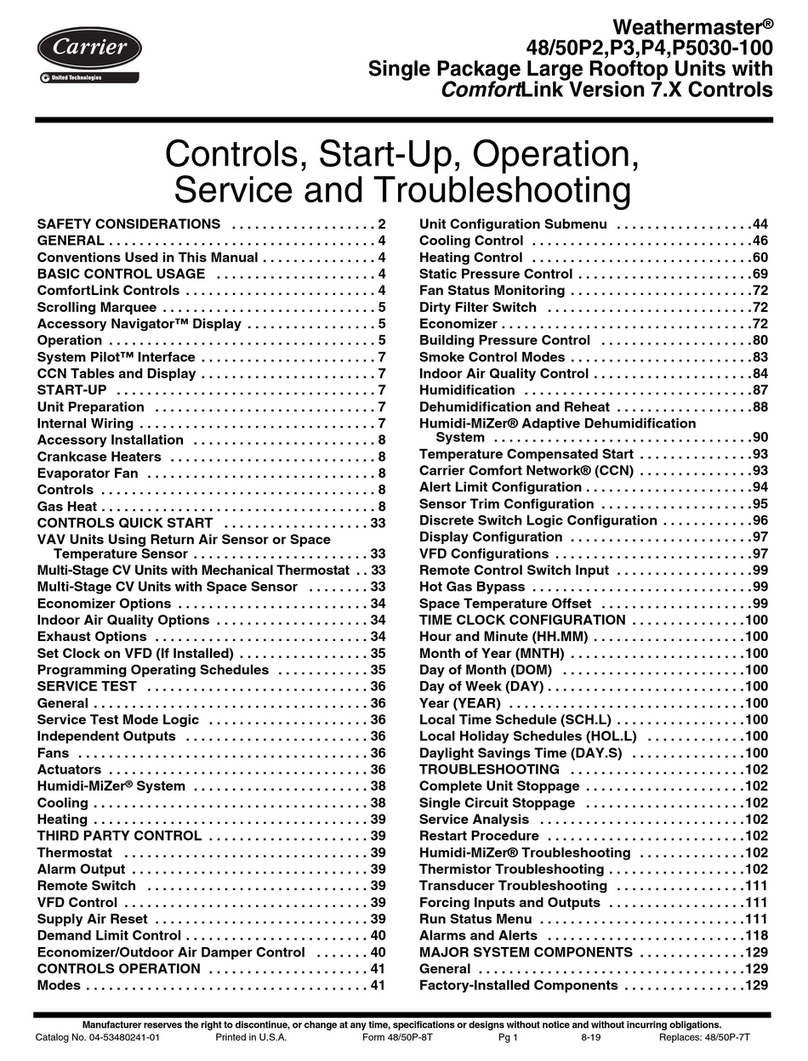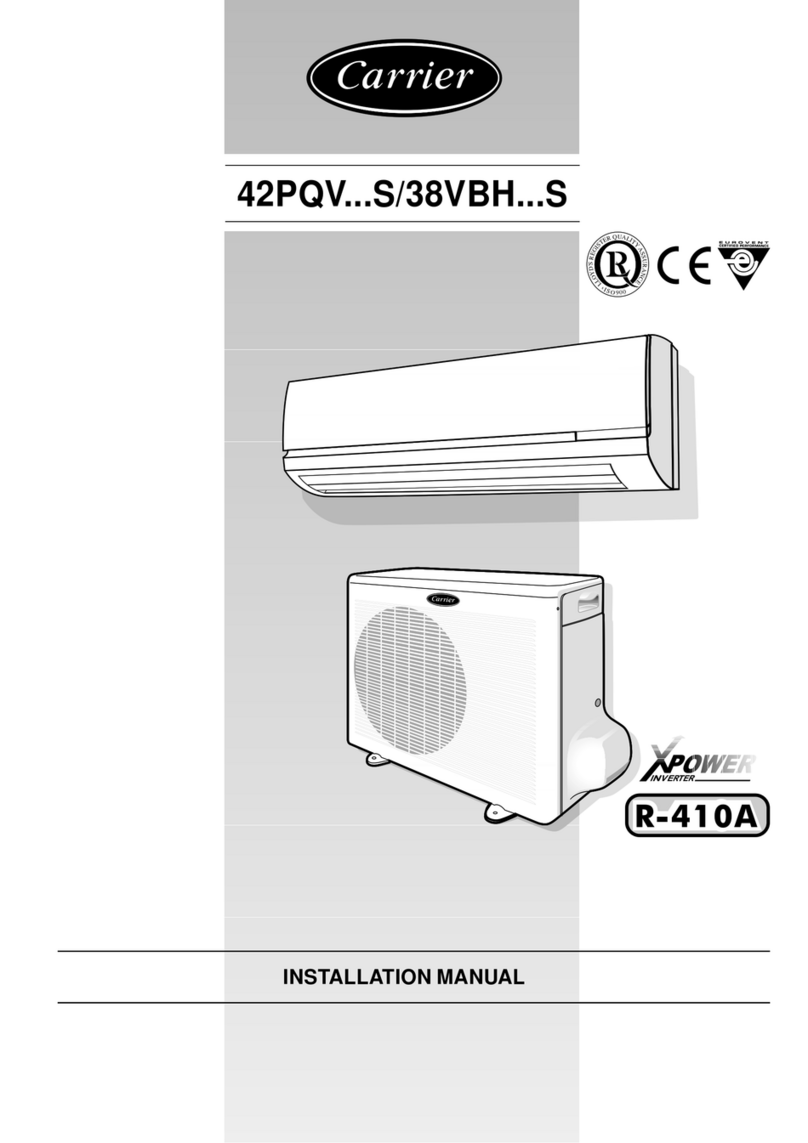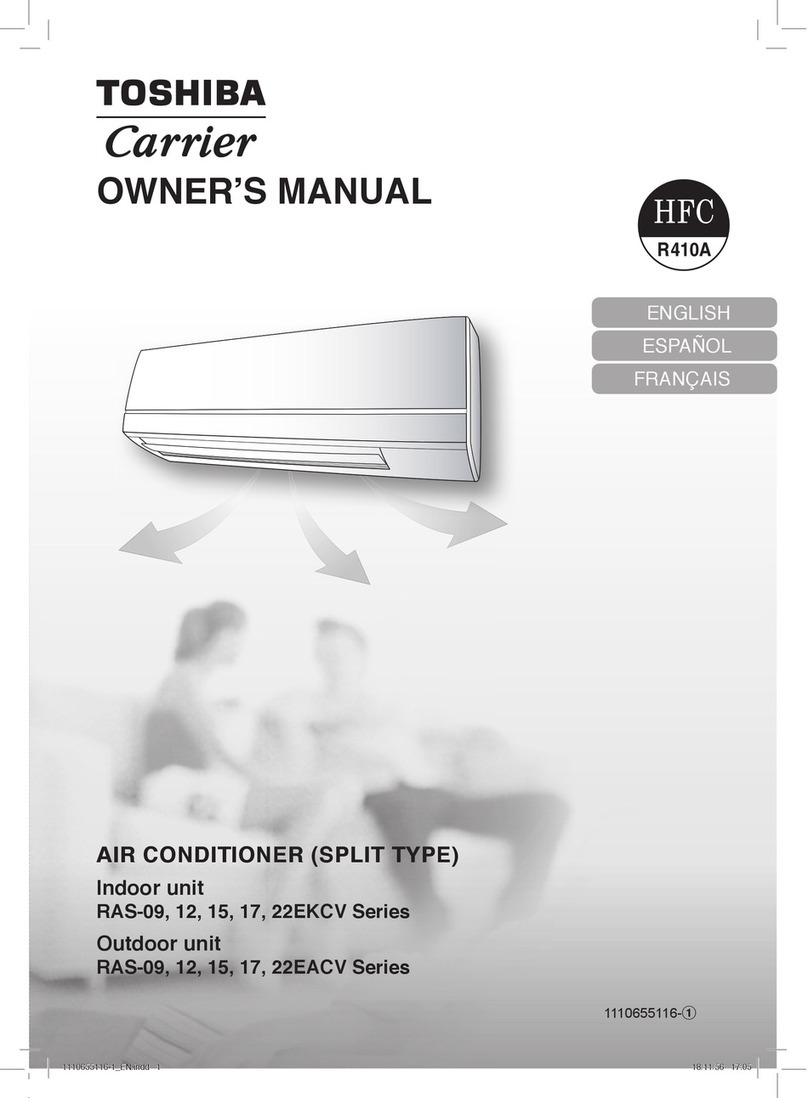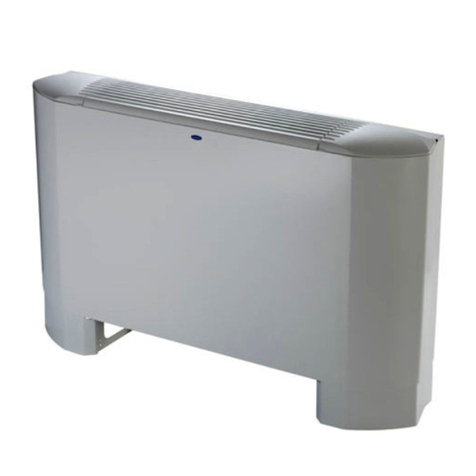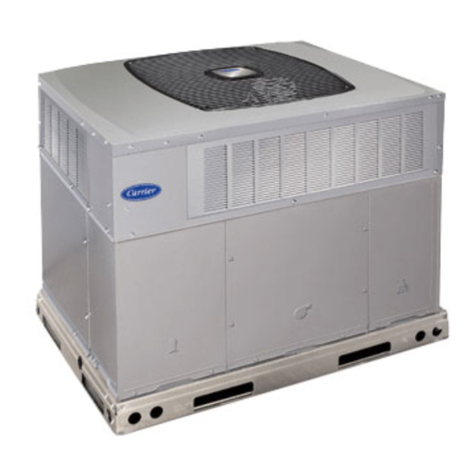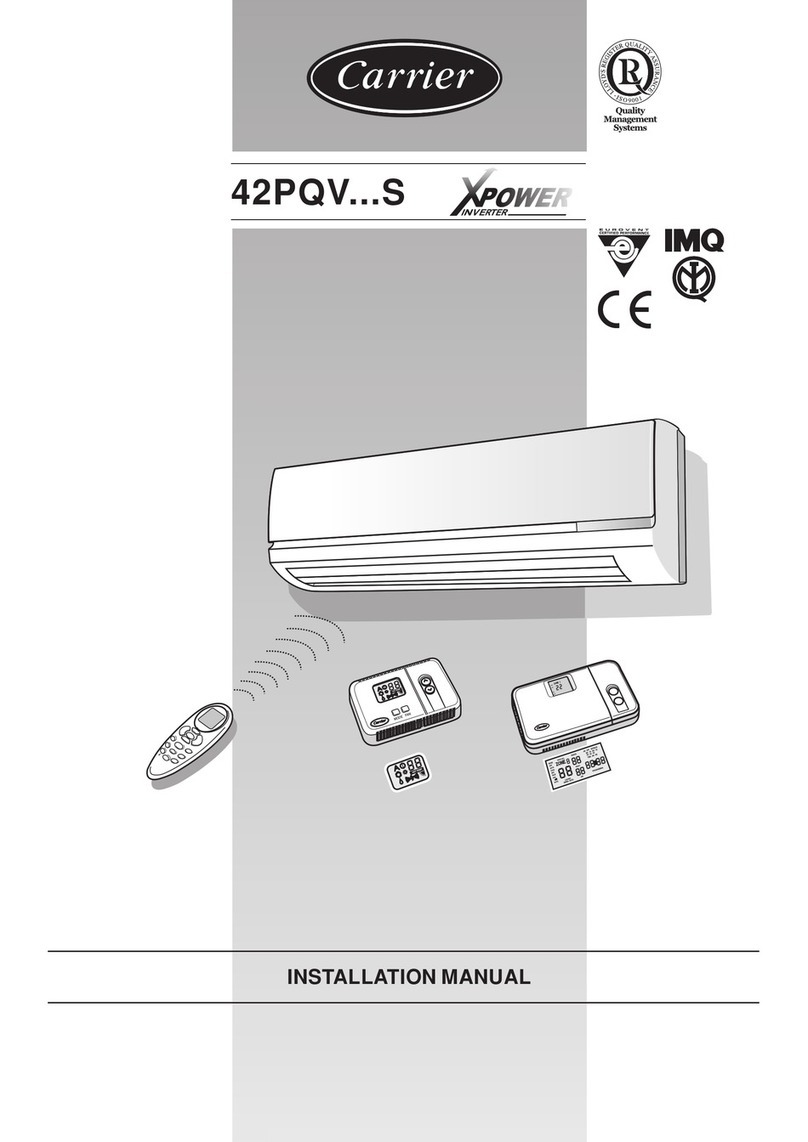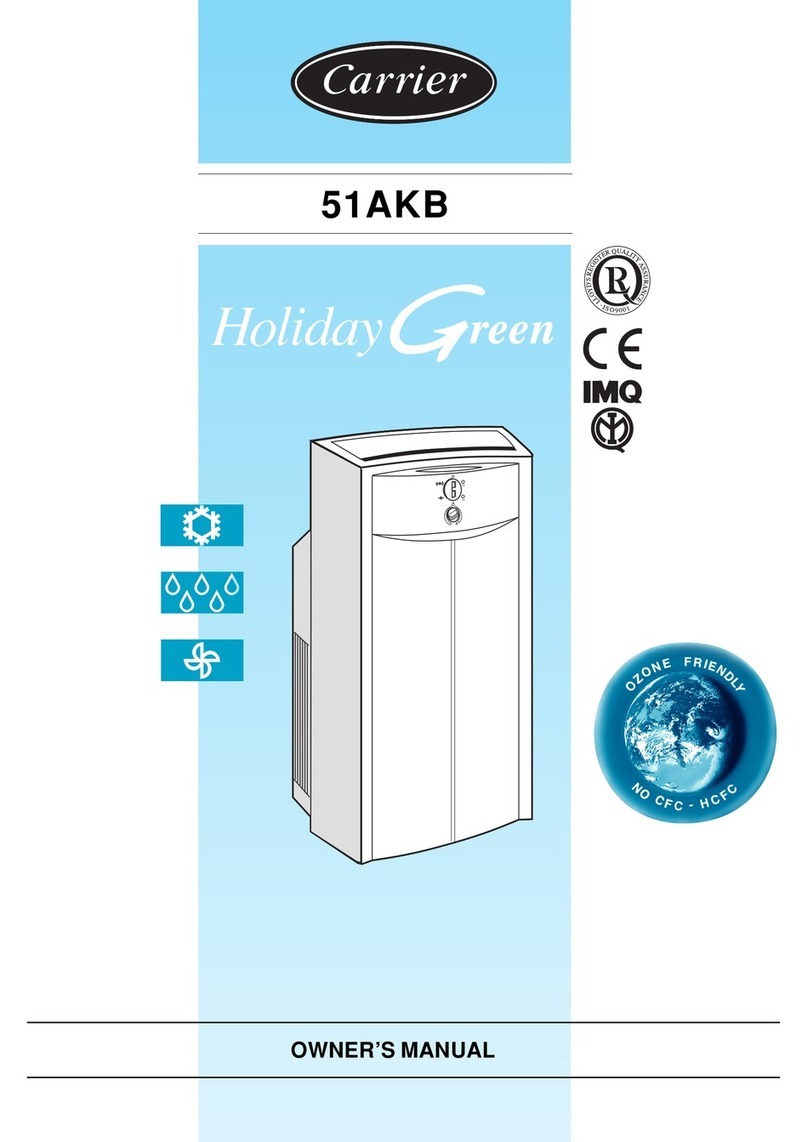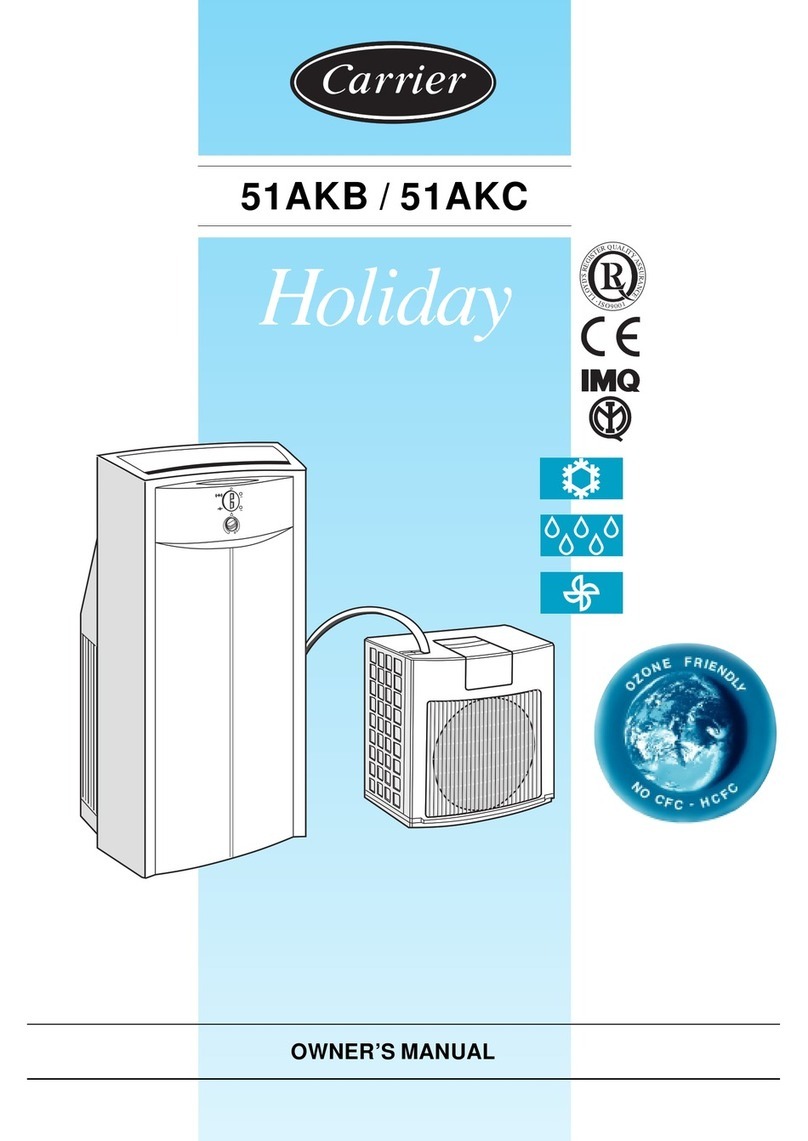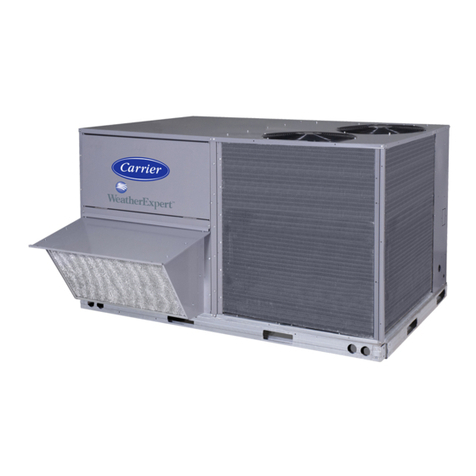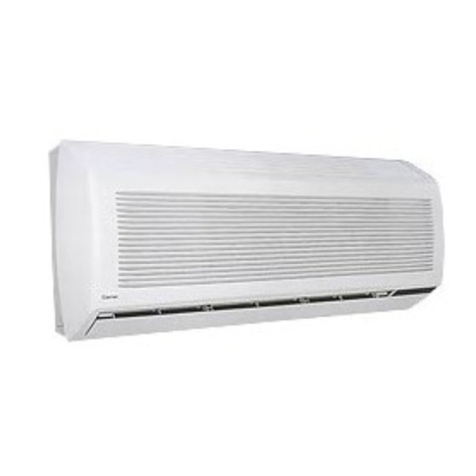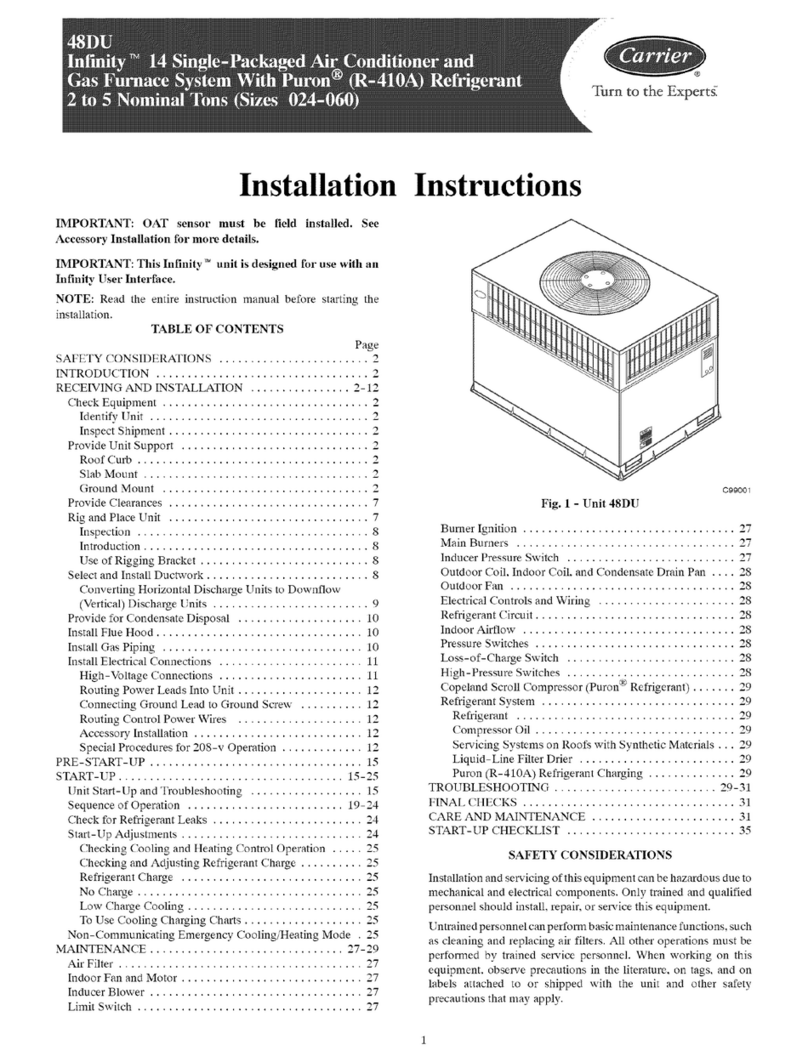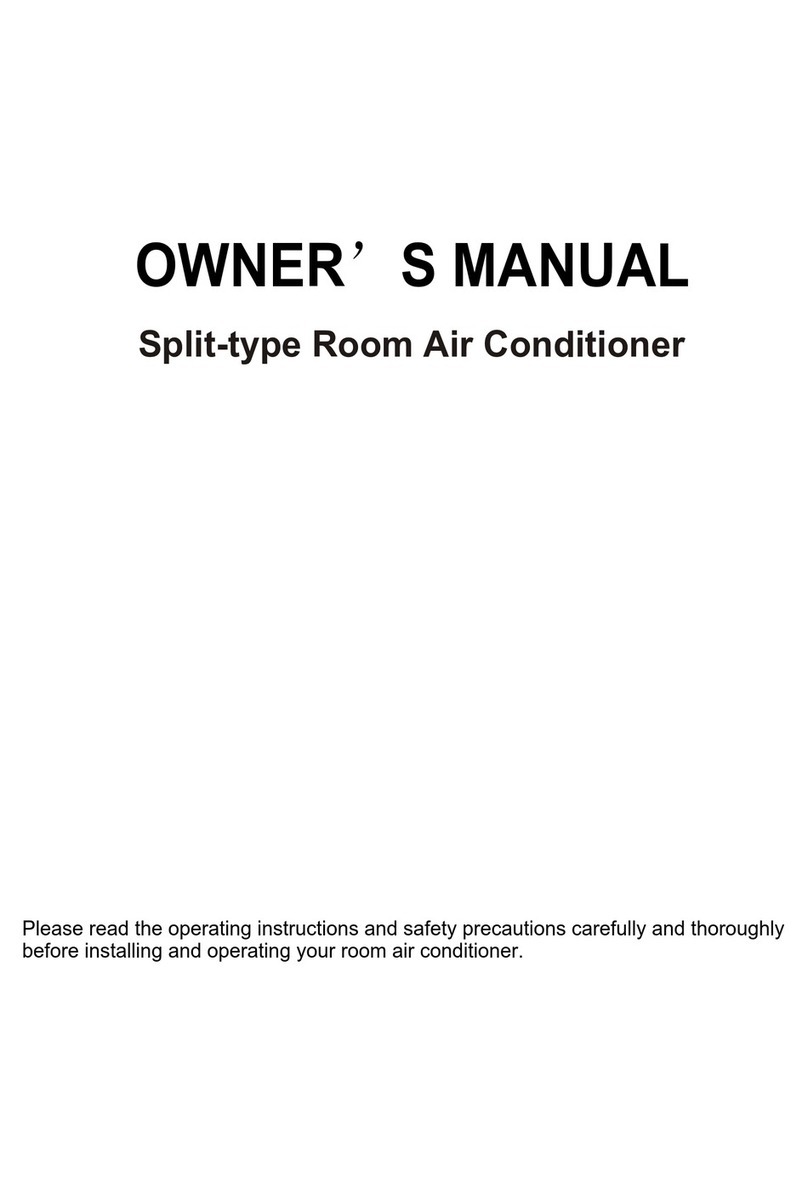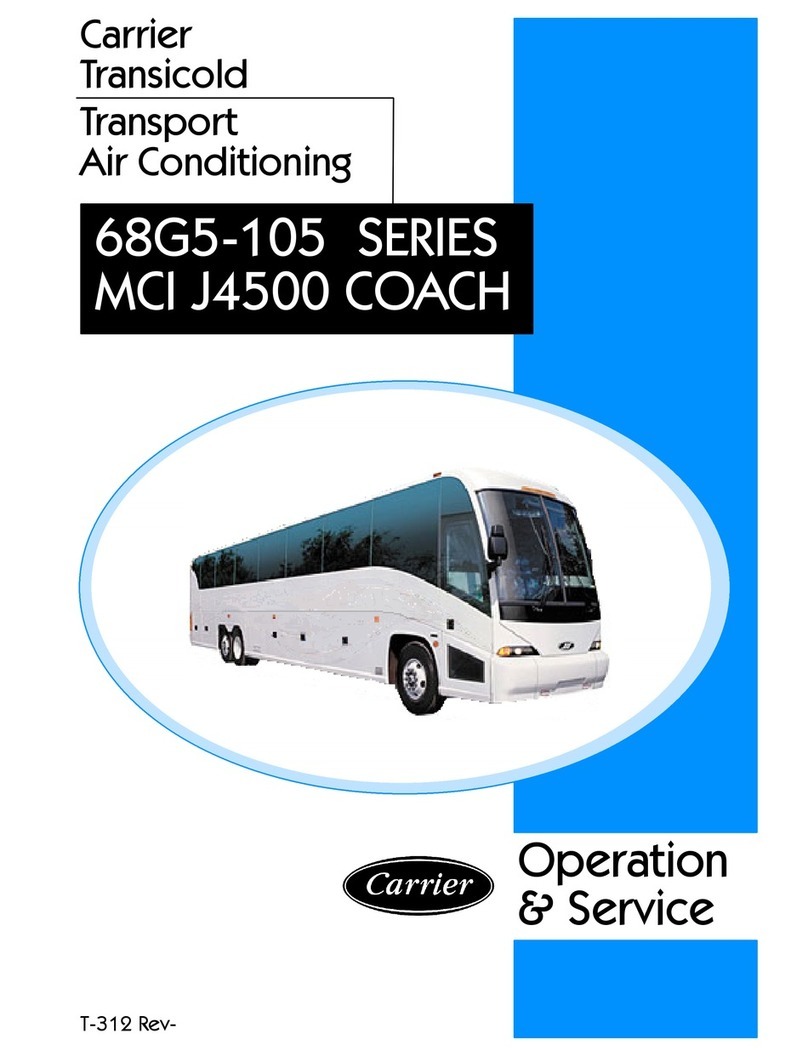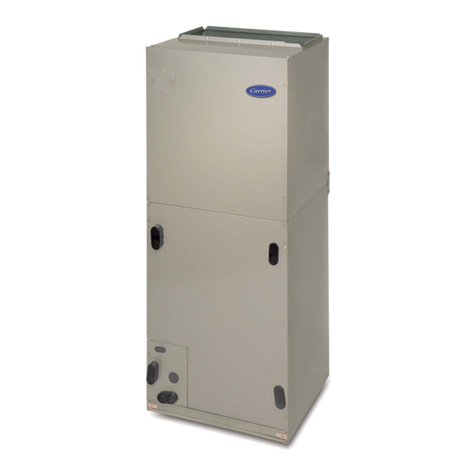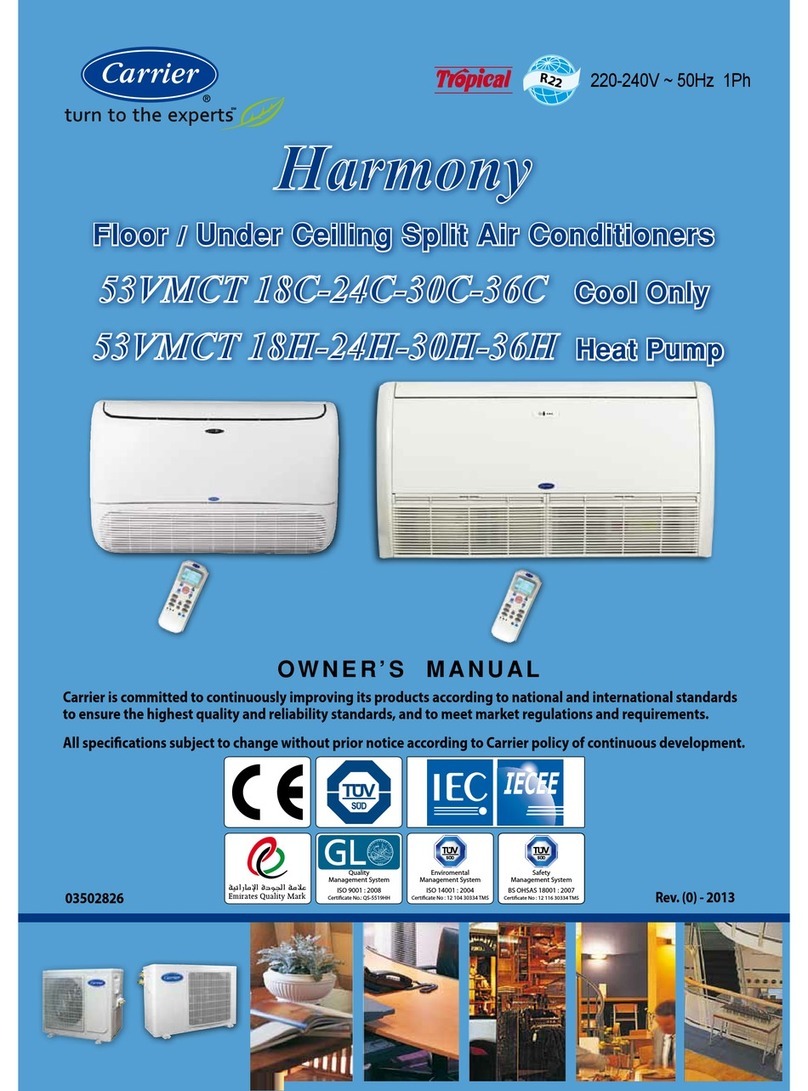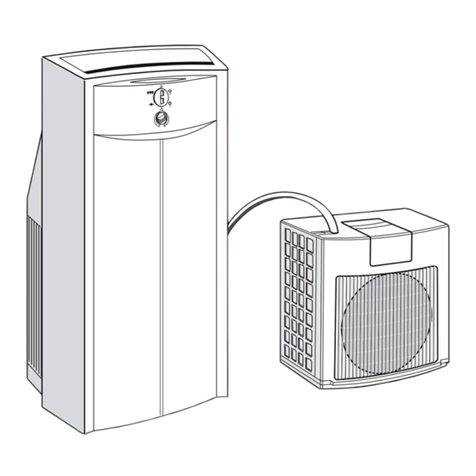
2
SAFETY CONSIDERATIONS
Installation and servicing of this equipment can be hazardous due to
mechanical and electrical components. Only trained and qualified
personnel should install, repair, or service this equipment.
Untrained personnel can perform basic maintenance functions such
as cleaning and replacing air filters. All other operations must be
performed by trained service personnel. When working on this
equipment, observe precautions in the literature, on tags, and on
labels attached to or shipped with the unit and other safety
precautions that may apply.
Follow all safety codes. Installation must be in compliance with
local and national building codes. Wear safety glasses, protective
clothing, and work gloves. Have fire extinguisher available. Read
these instructions thoroughly and follow all warnings or cautions
included in literature and attached to the unit.
Recognize safety information. This is the safety--alert symbol .
When you seethis symbolon theunit and in instructions ormanuals,
be alert to the potential for personal injury. Understand these signal
words: DANGER, WARNING, and CAUTION. These words are
used with the safety--alert symbol. DANGER identifies the most se-
rious hazards which will result in severe personal injury or death.
WARNING signifies hazards which could result in personal injury
or death. CAUTION is used to identify unsafe practices which may
result in minor personal injury or product and property damage.
NOTE is used to highlight suggestions which will result in en-
hanced installation, reliability, or operation.
ELECTRICAL SHOCK HAZARD
Failure to follow this warning could result in personal injury
or death.
Before installing or servicing system, always turn off main
power to system. There may be more than one disconnect
switch. Turn off accessory heater power switch if applicable.
!
WARNING
INTRODUCTION
The 50ZPA packaged air conditioner is fully self--contained and
designed for outdoor installation (See Fig. 1). Standard units are
shipped in a horizontal--discharge configuration for installation on
a ground--level slab or directly on the ground if local codes permit.
Standard units can be converted to downflow (vertical) discharge
configurations for rooftop applications with a field supplied
plenum.
RECEIVING AND INSTALLATION
Step 1—Check Equipment
IDENTIFY UNIT
The unit model number and serial number are printed on the unit
informative plate. Check this information against shipping papers.
INSPECT SHIPMENT
Inspect for shipping damage while unit is still on shipping pallet. If
unit appearsto be damaged or is torn loose from its anchorage, have
it examined by transportation inspectors before removal. Forward
claim papers directly to transportation company. Manufacturer is
not responsible for any damage incurred in transit. Check all items
against shipping list. Immediately notify the nearest Carrier office
if any item is missing. To prevent loss or damage, leave all parts in
original packages until installation.
Step 2—Provide Unit Support
For hurricane tie downs, contact distributor for details and PE
(Professional Engineering) Certificate, if required.
SLAB MOUNT
Place the unit on a solid, level concrete pad that is a minimum of 4
in. thick with 2 in. above grade. The slab should extend
approximately 2 in. beyond the casing on all 4 sides of the unit. Do
not secure the unit to the slab except when required by local codes.
A 6--in. wide gravel apron should be used around the flat surface to
prevent airflow blockage by grass or shrubs. The unit should be
level wo within 1/4 in. This is necessary for the unit drain to function
properly.
GROUND MOUNT
The unit may be installed either on a slab or placed directly on the
ground iflocalcodes permit.Place theunit on level ground prepared
with gravel for condensate discharge.
Step 3—Provide Clearances
The required minimum service clearances are shown in Fig. 5.
Adequate ventilation and outdoor air must be provided.
The outdoor fan draws air through the outdoor coil and discharges
it through the top fan grille. Be sure that the fan discharge does not
recirculate to the outdoor coil. Do not locate the unit in either a
corner or under an overhead obstruction. The minimum clearance
under a partial overhang (such as a normal house overhang) is 48 in.
above the unit top. The maximum horizontal extension of a partial
overhang must not exceed 48 in.
IMPORTANT: Do not restrict outdoor airflow. An air restriction at
either the outdoor--air inlet or the fan discharge may be detrimental
to compressor life.
Do not place the unit where water, ice, or snow from an overhang
or roof will damage or flood the unit. Do not install the unit on
carpeting or other combustible materials. Slab--mounted units
should be at least 4 in. above the highest expected water and runoff
levels. Do not use unit if it has been under water.
Step 4—Place Unit
Unit can be moved with the rigging holds provided in the unit base.
Refer to Table 1 for operating weights. Use extreme caution to
prevent damage when moving the unit. Unit must remain in an
upright position during all moving operations. The unit must be
level with in 1/4 in. for proper condensate drainage; the
ground--level pad must be level before setting the unit in place.
When a field--fabricated support is used, be sure that the support is
level and that it properly supports the unit.
Step 5—Select and Install Ductwork
The design and installation of the duct system must be in accordance
with the standards of the NFPA for installation of non--residence
type air conditioning and ventilating systems, NFPA 90A or
residence type, NFPA 90B and/or local codes and ordinances.
Select and size ductwork, supply--air registers, and return air grilles
according to ASHRAE (American Society of Heating,
Refrigeration, and Air Conditioning Engineers) recommendations.
Use the duct flanges provided on the supply-- and return--air
openings on the side of the unit. See Fig. 5 for connection sizes and
locations. The 14--in. round duct collars are shipped inside the unit
attached to the base pan in theindoor blowercompartment. They are
field--installed and must be removed from the indoor blower
compartment prior to start--up, even if they are not used for
installation.
50ZPA
